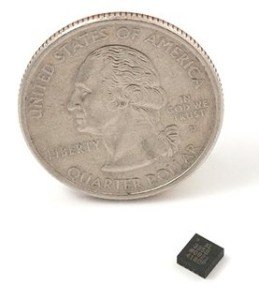The article covers how to interface an accelerometer with the atmega32/atmega16. Before proceeding, the user must know the basics of ADC (Analogy to digital converter) of the AVR.An accelerometer is an electromechanical device that will measure acceleration forces.
These forces may be static, like the constant force of gravity pulling at your feet, or they could be dynamic – caused by moving or vibrating the accelerometer.Accelerometers are of two types Analog and Digital. In this post we will be discussing about Analog accelerometer. They give voltage as output which is proportional to acceleration. The digital one gives the PWM output or direct binary digital data
Description
The objective of the post will be to interface a 3-axis accelerometer (ADXL335) and a JHD162A LCD.The microcontroller will sense the different Analog values of the accelerometer convert them into digital and then display on the LCD.
ADXL335 have a sensitivity of +-3G.
Kindly note the ST pin has to be connected to the ground as it’s a self teat feature and we don’t require one. Also maximum modules operate on 3.3V rather than 5v. Also, we will be using an LCD library which can be found in the code files.
For more detail: Accelerometer Interfacing with AVR

